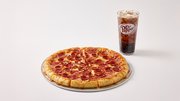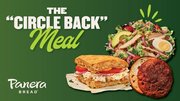Article
Why now is the right time for mobile ordering
With consumer adoption at the right threshold, restaurants can put their brands in the pockets of millions of customers.

March 18, 2014
By Greg Constantine,
EVP Client Operations, SecureNet
Mobile ordering is certainly not a new phenomenon. Pizza Hut introduced its smartphone app in 2009, and Chipotle's app was so popular it crashed servers. But the news that Taco Bell is introducing mobile ordering and payments this year may just be the tipping point. Chick-fil-A and McDonald's are both reportedly testing apps of their own. Will other brands follow suit? The time is right, and here's why.
Consumer adoption
According to the National Restaurant Association, 74 percent of consumers aged 18 to 34 say they would order takeout or delivery on a mobile device if it were available. Several years ago, the barriers to entry made mobile applications far too great an expense to pursue. Today, with more consumers choosing smartphones over personal computers, the focus has shifted from online ordering to mobile. Additionally, consumers are more willing to transact via mobile, due in part to better security and seamless payment integration. With consumer adoption at the right threshold, restaurants are truly able to take advantage of the opportunity to put their brand directly in the pockets of millions of customers.
Available technology
As smartphones become increasingly commonplace, the technology behind them has become more efficient. Public Wi-Fi is more accessible, and 3G and 4G networks have increased mobile Internet speeds tremendously. The mobile user experience has also improved tremendously. But in order for fast casual customers to truly embrace mobile ordering, the technology needs to work flawlessly all of the time. When Starbucks first launched its mobile payments platform, it was not without problems. Mobile payments at Starbucks now account for nearly 11 percent of transactions, and while it's still too soon to consider credit cards truly antiquated, the potential certainly exists for mobile to take a large and growing share of the pie.
Competitive marketplace
Certainly, mobile ordering and payments appeal to a younger demographic, a group that some fast casual restaurants have increasingly struggled to capture. Millennials, people aged 19-34, account for the largest generation in America. And as brands such as BlackBerry and Blockbuster can attest to, they are decision-makers whose preferences can make or break you. As research has shown, smartphones may be the answer. Gartner has estimated that mobile payments will top $720 billion a year by 2017, and the marketplace is hypercompetitive down to the last dollar.
Problem solving
Mobile ordering and payments go beyond just the transaction. The reason Starbucks has been so successful with its app is because it includes other value-adds for the customers, like loyalty programs and special offers. They're able to do this because of the rich analytics mobile ordering provides; it truly is the best kind of market research. It provides behavioral, purchase-oriented data, which is extremely valuable to the brand and in many ways justifies the investment. Mobile ordering has the ability to make fast food even faster, meeting a need in a volume-driven industry that no other solution has yet been able to match.
Greg Constantine is the executive vice president of client relations for SecureNet, a payment processor that works with fast casual restaurants to provide integrated payment solutions and detailed purchasing analytics.
Photo: Courtesy of Starbucks












